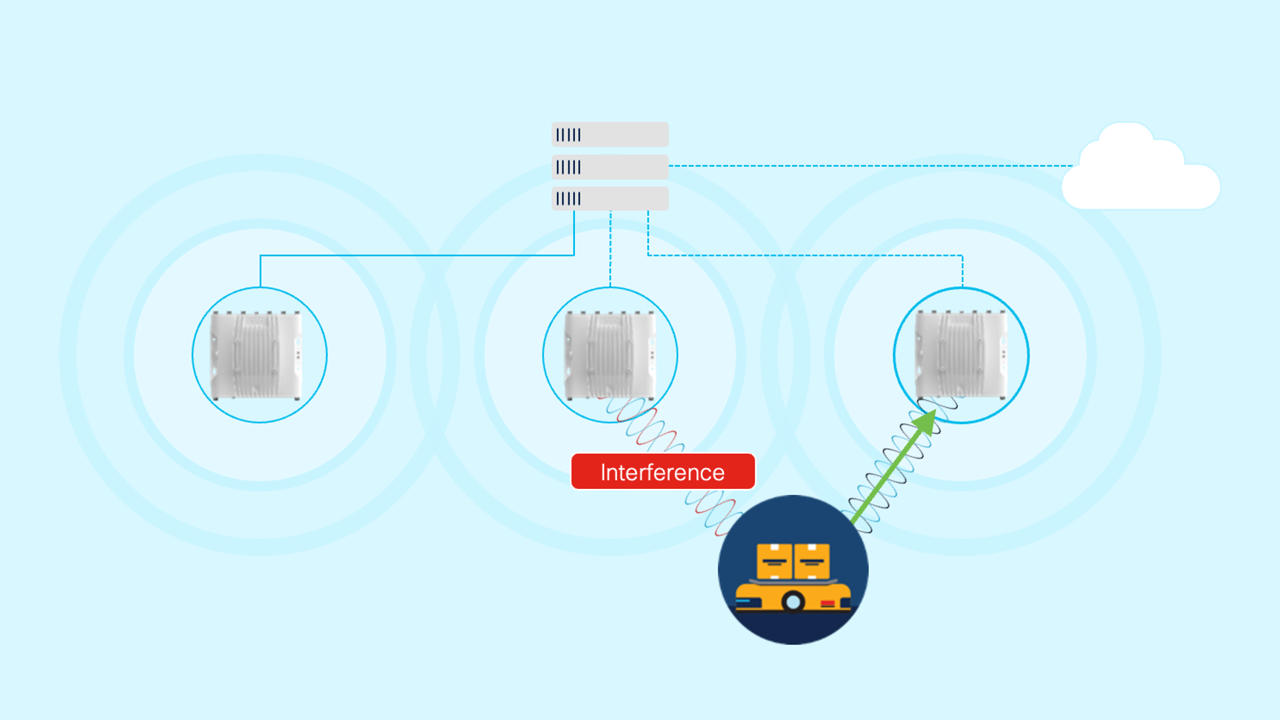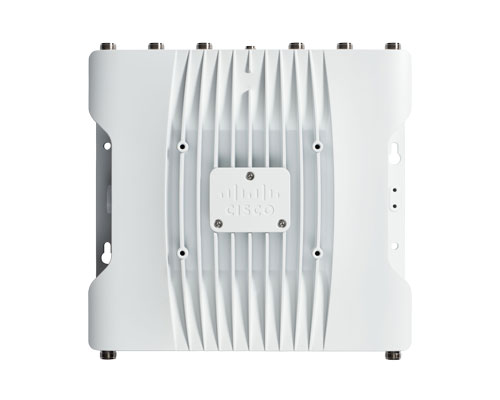TechnologyNovember 1, 2022
Addressing reliability issues in industrial wireless networks

Industrial wireless technologies are indeed required to enable autonomous and remote-controlled robots and vehicles, to improves collaboration between mobile workers and increase the overall efficiency and safety of an industrial system. Reliability is a key issue for all of these applications.
Digital transformation in automation is driving a rapid growth of industrial networks. Vehicles and robots are getting autonomous, and more than ever reliable wireless technologies play a key role in supporting mission critical IoT applications. Moving assets cannot tolerate dropped connections or network latency. A glitch could jeopardize safety and compromise the OT process. Even connecting fixed assets isn’t always easy. Fiber isn’t available everywhere and it can be too expensive to deploy and maintain.
To address these complex fixed and mobile use cases, Cisco has developed the Ultra-Reliable Wireless Backhaul (URWB) technology. It provides multi-gigabit fiber-like performance, connects moving assets, links locations that are a few miles apart or need temporary connectivity. Because the underlying technology is Wi-Fi, it provides complete control over the network and uses unlicensed spectrum, reducing costs and complexity and making it easy to deploy pretty much anywhere.

Cisco Ultra Reliable Wireless Backhaul topology.
Connecting critical industrial assets requires advanced wireless technology
Cisco URWB is a wireless backhaul technology derived from Wi-Fi and designed to serve mobile network environments such as trains, buses, subways, remotely controlled cranes, autonomous guided vehicles (AGVs), and autonomous mobile robots (AMRs). It can also be deployed as a fixed infrastructure, providing backhaul where fiber can’t go or is too expensive.
Cisco URWB technology provides low-latency (<10ms), highly reliable (up to 99.995%), long-range, high-bandwidth connections that can handle endpoints moving at high speeds with seamless handoffs and zero packet loss.
This is possible thanks to Cisco’s MPLS-over-wireless link protocol, created to overcome the limits of standard wireless protocols when transmitting any IP-compatible traffic with very low latency in a mobility context.
It brings a ‘make-before-break’ procedure, enabling moving vehicles to establish a reliable connection with the next Access Point along its path before losing connectivity to the current one.
Cisco URWB networks can be designed for Layer 2 use cases (such as when connecting AGVs or AMRs in a factory floor) as well as Layer 3 use cases (such as for train-to-trackside communications in subways or railways), allowing the network to scale in size without compromising reliability and availability.
A Cisco URWB topology is shown in the graphic above. The radio onboard the vehicle is connected to fixed access point in charge of backhauling traffic from mobile assets to the infrastructure. Data from the vehicle is encapsulated on a centralized MPLS gateway and then decapsulated as IP packets on the IP network.
Recent enhancements were made to Cisco URWB to deliver uninterrupted connectivity to fast-moving devices by sending high-priority packets via redundant paths. In fact, Cisco’s patented Multipath Operations (MPO) technology can duplicate protected traffic up to 8 times and avoid common paths.
This functionality, combined with the hardware capabilities, can further reduce the latency, improve reliability, addressing both interference and hardware failures.
Earlier this year, Cisco launched the Catalyst IW9167E Heavy Duty Access point. It supports Cisco’s Ultra-Reliable Wireless Backhaul technology as well as Wi-Fi 6.
The dual-mode capability brings the flexibility to decide which technology to use depending on the project requirements. The operational mode can be swapped in the field, to be able to adapt the product to the specific use case, facilitating the transition between the two technologies and optimizing the investment.
Industries embracing wireless networking

Cisco Catalyst IW9167E Heavy Duty Access Point
Industrial operations have long required wireless networking to connect mobile workers and machinery where wired networking was not a feasible option. But as wireless technologies have improved, use cases have become more numerous across all industry verticals.
Cisco URWB has been helping numerous industrial organizations around the World to address these use cases for years.
In Italy, La Spezia Container Terminal deployed the URWB technology to connect all mobile assets such as Ship-to-Shore cranes (STSs), Rubber-Tyred Gantry cranes (RTGs), stacking cranes, reach stackers, and terminal tractors creating a private mobile wireless backbone offering ultra-low latency and seamless roaming. It has solved coverage and network downtime issues that LSCT was experiencing with traditional Wi-Fi. Moreover, the number of access points required to create the backbone has been dramatically reduced, making the new solution much easier and cheaper to manage.
In Texas, the Canutillo Independent School District deployed the URWB technology to connect Wi-Fi hot spots in remote locations with poor Internet coverage so thousands of students could do distance learning from home during the COVID-19 pandemic.
At the Kennedy Space Center, a Dallara AV-21 race car involved the Indy Autonomous Challenge (https://www.indyautonomouschallenge.com/), set a new World record for the fastest autonomous car, sustaining speeds of over 192.2 mph (309.3 kph). All engaged race cars were connected using Cisco URWB technology, enabling high bandwidth, ultra-low-latency, reliable connectivity to their control systems so they could make sub-second decisions even at high-speeds.
Conclusion
Cisco Ultra-Reliable Wireless Backhaul is a breakthrough in private mobile wireless networking. It is as easy to deploy and manage as Wi-Fi, and offers cost-effective, high bandwidth, ultra-low latency, and high availability connectivity required to enable these new use cases. It’s the perfect technology to drive the highest level of automation in industrial networks.
Industry Wireless Use Cases
Manufacturing
- Using Automated Guided Vehicles (AGVs), robots (AMRs), and other mobile equipment on the factory floor
- Providing reliable voice, video, collaboration, and Augmented Reality and Virtual Reality (AR/VR) tools to the factory workforce
- Controlling rotating and conveyance systems
- Downloading software and data to manufactured products
- Supporting mobile Human-Machine Interface devices (HMIs) and handheld tooling
Connected rail
- Communications-Based Train Control (CBTC)
- Onboard connectivity (passenger Wi-Fi, workers’ access to applications, live Closed-Circuit TV (CCTV), digital displays, Point Of Sale (POS) for onboard purchases, etc.)
- Vehicle telemetry and real-time asset monitoring, including track infrastructure
- Station passenger services such as Wi-Fi, wayfinding, and digital kiosks
Ports and terminals
- Connecting cranes and handling vehicles to Terminal Operating Systems (TOS)
- Using tele-remote devices (Rubber-Tired Gantry (RTG), ship-to-shore, and quay cranes and straddle carriers)
- Enabling autonomous operations (AGVs, AMRs, etc.)
- Providing voice, video, and collaboration applications for terminal workers and visitors
- Enabling port access control, traffic management, and video surveillance
Mining
- Connecting mining equipment and control systems
- Enabling autonomous operation of mining equipment
- Providing voice, video, and collaboration applications for mine workers
- Providing access control and video surveillance
Oil and gas
- Monitoring remote operations equipment
- Connecting and controlling midstream assets
- Performing video surveillance in large, distributed sites
Connected communities (smart and safe cities)
- Connecting sensors that monitor conditions around the city such as public transport, traffic, etc.
- Providing Wi-Fi access points in public areas such as parks, libraries, etc.
- Installing CCTV for public safety
- Providing short-term networking needs for special events


